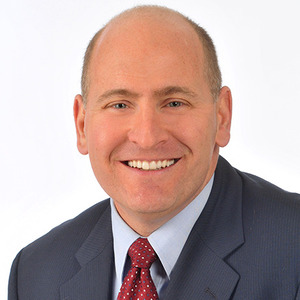Power List

John A. Hovanesian
Power List Profile
Principal at Harvard Eye Associates; Clinical faculty member at UCLA Stein Eye Institute, California, USA
What is an interesting or little-known fact about you?
I'm a pilot, soon to earn my instrument rating. Learning to fly, which I have taken on just since the pandemic, has been a great education that has actually benefited my practice of medicine. Doctors should use more checklists, like pilots do, and organize their preparation for the unexpected.
Why did you decide to pursue ophthalmology/your subspecialty?
Ophthalmology combines all the best in medicine – the ability to quickly and significantly improve our patients' lives, and we never make our patients take off their clothes or step on a scale.
Who is someone in ophthalmology/your subspecialty that you feel has been particularly influential over the past 10 years?
Eric Donnenfeld has been a close personal friend, a research collaborator, and a fellow faculty member. Eric possesses a remarkable collection of talents to understand and to communicate, and he has meaningfully propelled every part of our industry forward.
What’s been the biggest breakthrough in ophthalmology/your specific field over the last 10 years?
One big innovation has been the medical treatment of previously untreatable macular disease, now including geographic atrophy. The other has been a progressive shift in the treatment of glaucoma from drops to surgical procedures that are highly effective, more or less permanent, and very well tolerated.
Is there a particular tool, technological advance, or instrument you would not have been able to live without over the past 10 years?
Lens implants keep getting better and better. My own latest study showed that 87 percent of patients with modern trifocal IOLs wear no glasses at all. That's almost three times the frequency of complete spectacle independence that we saw with the first products.
Do you have any strong opinions with which the rest of the field tends to disagree?
I believe we should find a way to make refractive surgery for young people significantly less expensive. Lasik and similar procedures are much safer than contact lenses, and they dramatically improve the quality and safety of life. Everyone deserves that – not just those who can afford to spend several thousand dollars.
What would you like to see change in ophthalmology/your subspecialty over the next 10 years – and why?
We need to find a way to train far more ophthalmologists, before the impending collision of need and supply fully impacts us. It's going to require funding and work to expand training programs, and we need to get started yesterday.
Where do you predict ophthalmology/your subspecialty will be 10 years from now?
I hope we will see much greater use of digital innovations, including platforms for analyzing our data to find new treatments, help us keep better records with less effort, and communicate more seamlessly with patients.
Already, we are reaching the low hanging fruit of doing better – and now we need to tackle some of the more challenging problems that digital solutions can help address.
Do you have any personal missions for the next 10 years?
My personal goal is to give back to the field of medicine that has been so generous to me. I plan to give leadership to eye care in the developing world, particularly through the Armenian Eye Care Project, and work hard for a sustainable future where everyone has a chance to fight blindness.
Who would you invite to your dream dinner party?
My wife and three kids. There's nobody I'd rather spend time with.
